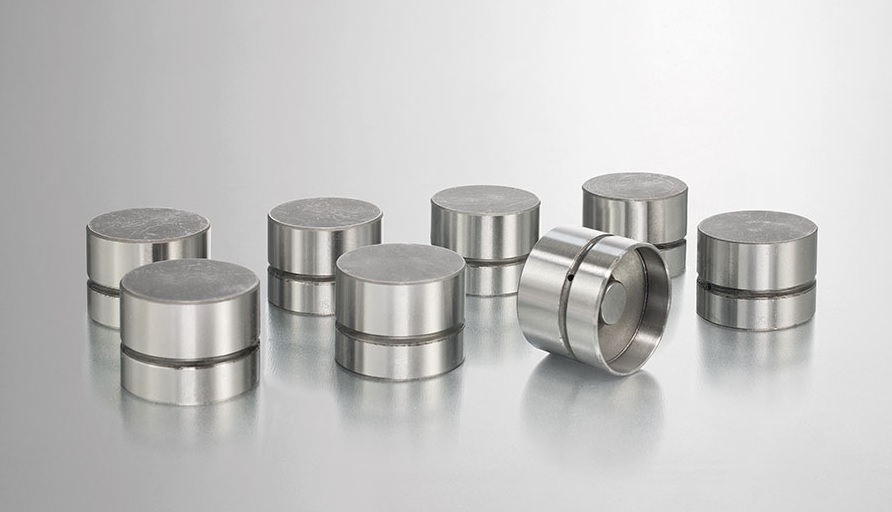Strategic metals are the invisible backbone of today’s most advanced technologies.
From smartphones to satellites, these metals play an important (but often forgotten) role in powering the devices and infrastructure we use every day. As demand continues to rise, companies are realizing that these high-value materials don’t just come from mines; they’re often hiding in scrap!
For manufacturers, tech firms, and facility managers, the potential to recover strategic metals from waste is a sustainability initiative as well as a business opportunity. But to capture that value, you need to know where to look and what to look for.
This guide will walk you through how to identify strategic metals in your scrap, giving you practical ways to unlock hidden revenue and support responsible resource management at the same time.
Why Strategic Metals Are Worth Recovering
Strategic metals (also called critical or rare metals) are essential to modern industries but are difficult to extract in large quantities. Metals such as indium, cobalt, tantalum, and rare earth elements are used in everything from touchscreens and solar panels to EV batteries and military-grade electronics.
The challenge is that these metals aren’t typically found in large, standalone deposits. They’re often extracted as byproducts or locked within complex components. As a result, recycling is one of the few ways to supplement global supply, and companies that generate scrap containing these materials may be sitting on untapped value.
Where to Find Strategic Metals?
Identifying these metals isn’t just good environmental practice. It’s a smart way to reduce costs, recover revenue, and reduce dependence on volatile global supply chains.
Here’s what you need to know about finding them.
Start with Your E-Waste
One of the most accessible sources of strategic metals is electronic waste. Whether you’re a small manufacturer or a large-scale facility, chances are you’ve got aging laptops, broken monitors, or outdated devices gathering dust. Many of these items contain indium, gold, tantalum, and other valuable metals.
Old LCD screens, for example, often contain a thin layer of indium tin oxide (ITO), used to create transparent conductors. Even if the screens are cracked or damaged, the indium remains inside.
Circuit boards are another high-value component. They typically contain small quantities of gold, silver, and palladium, which can be extracted and refined.
When clearing out e-waste, take the time to document what you’re discarding. You may be surprised how much value is hidden in what looks like electronic junk.
Look Closely at Your Production Scrap
Manufacturing often produces byproducts that go straight to the bin—yet some of this waste may contain valuable metals.
Whether it’s leftover sputtering targets from thin-film deposition, metal-rich sludges from plating baths, or rejected parts from quality control, production scrap can contain high concentrations of materials like indium, cobalt, or titanium.
Shavings, off-cuts, and filings from aerospace-grade alloys are especially valuable. High-nickel or titanium alloys used in precision machining often command strong prices on the secondary market. Even if the material isn’t usable as-is, it can be processed and recycled into feedstock for new production.
Facilities that routinely discard metal-rich byproducts should consider setting up a system to segregate and track those materials. With proper identification, what used to be treated as trash can become a consistent revenue stream.
Don’t Overlook Solar and Renewable Equipment
Companies working in solar, wind, or electric vehicle (EV) infrastructure often handle materials containing strategic metals without realizing it. Solar panels, for instance, may include indium and gallium in thin-film coatings. Crystalline panels often use silver and tin in their soldering.
Wind turbines and electric vehicle motors are another source of hidden value. Their permanent magnets frequently contain neodymium and dysprosium. These are rare earth metals with strong market demand and limited global supply.
When decommissioning or replacing these systems, components should be flagged for recycling instead of disposal.
Even test panels, damaged parts, and defective batches can hold resale value if they contain any of these elements. A quick assessment from a recycling partner can determine what’s worth reclaiming.
Watch for High-Performance Alloys in Aerospace and Defense Scrap
Some of the highest-value strategic metals appear in the aerospace and defense sectors.
Aircraft frames, engines, and precision tools often use advanced alloys that combine titanium, beryllium, cobalt, or nickel. These materials are engineered for durability, corrosion resistance, and high-temperature performance, but they’re also expensive and difficult to extract from raw ore.
Even a small quantity of scrap from aerospace fabrication, such as rejected engine components or titanium fasteners, can be worth recycling. Machining shavings and off-cuts shouldn’t be treated as general metal scrap; they deserve separate handling and evaluation.
Facilities that support aerospace production should work with recycling partners who understand how to identify and recover these metals properly. Sorting and storing these materials separately allows for more accurate valuation and higher returns.
Look Beyond the Obvious
Some scrap materials containing strategic metals don’t fall neatly into the categories above. Telecom equipment, fiber-optic components, medical imaging devices, and even R&D prototypes may include rare or high-value materials.
The problem? These items may not look like they’re worth much at first glance.
They might be sitting in storage, written off, or headed for a landfill. But even obscure or small-batch equipment may contain metals that are difficult to source and easy to resell—if you know what to check for.
Before discarding any specialized or technical equipment, pause to assess the materials inside. It’s always worth asking a qualified recycling company to review them for hidden value.
Why It Pays to Work with a Scrap Metal Removal Expert
Identifying strategic metals in scrap isn’t always as simple as checking labels. Many materials are combined, coated, or embedded within complex assemblies. This makes manual identification difficult, and mistakes can lead to lost value or improper disposal.
That’s where a scrap metal removal and recycling partner like Scrap Gators comes in.
They specialize in identifying, sorting, and processing scrap that contains strategic metals. Whether you’re dealing with outdated electronics, production waste, or aerospace off-cuts, they can help you recover value, maintain compliance, and simplify the logistics.
Their team uses advanced testing and classification tools to quickly assess scrap and route it to the appropriate downstream processing. They also manage the paperwork, reporting, and pickup coordination, giving you peace of mind and better returns.
Turning Scrap into Strategy
In a resource-constrained environment, it no longer makes sense to ignore the hidden value in industrial scrap. Strategic metals are expensive, in demand, and increasingly difficult to source, and much of that demand can be met through recycling.
For manufacturers and facility managers, identifying these materials in your waste stream is a chance to contribute to supply chain resilience and reduce environmental impact, while adding a new source of income to your operations.
Whether it’s indium in your e-waste, cobalt in your battery scrap, or titanium in your aerospace cuttings, the opportunities are everywhere.
Scrap Gators works with businesses across electronics, manufacturing, aerospace, and renewable energy sectors to recover high-value metals from their waste. They make recycling simple, secure, and profitable.






